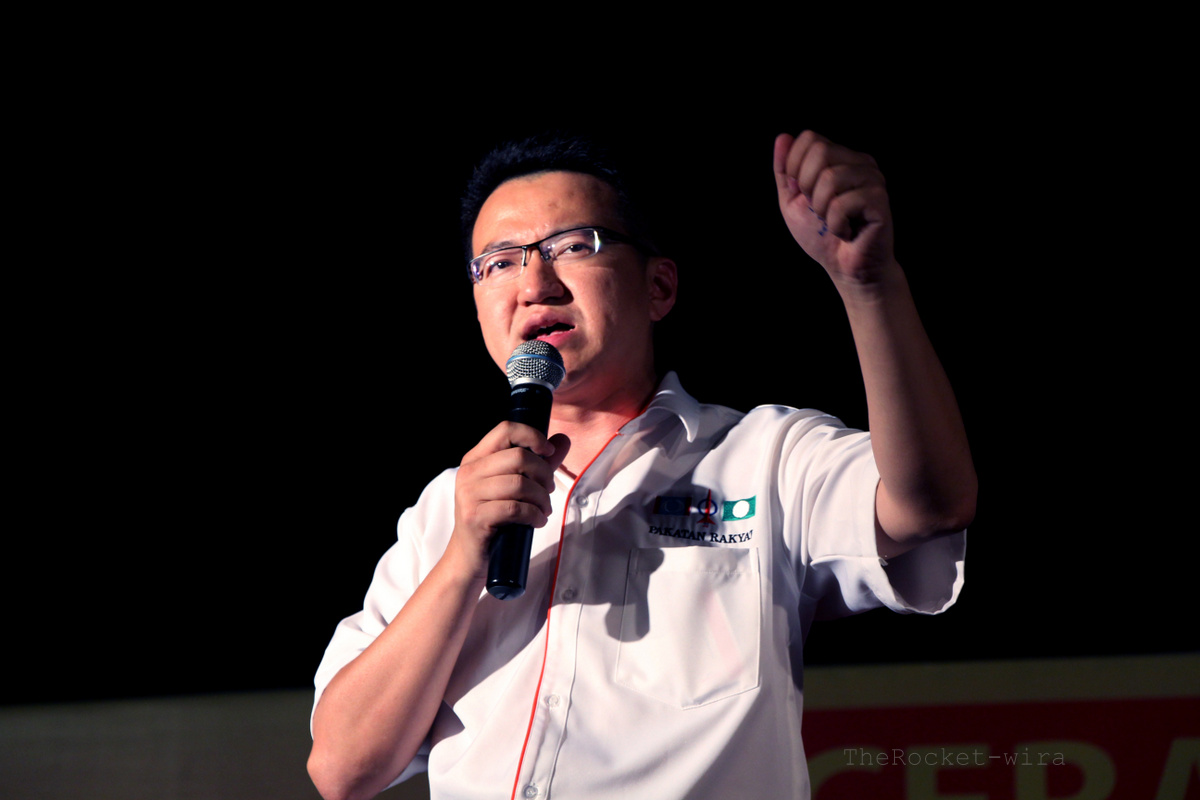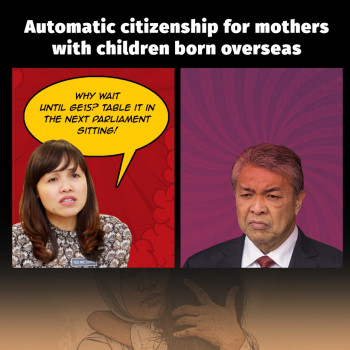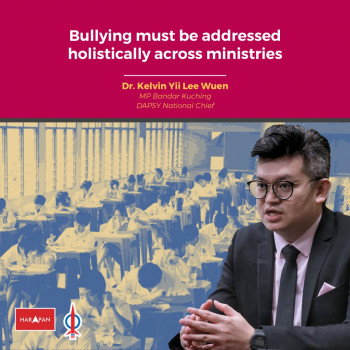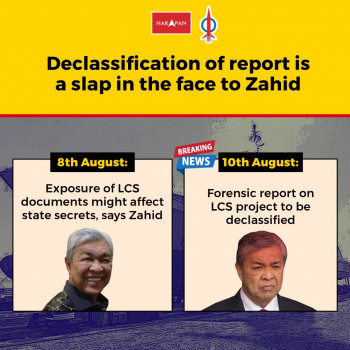By Liew Chin Tong, MP for Kluang
July 2015 will mark the 60th year of UMNO in power since winning the British-administered self-rule election in 1955. It held the dubious world record of being the elected government with longest unbroken rule.
Apart from using its incumbency to redraw electoral boundaries, dispensing the public largesse to buy support, and genuinely delivering some economic goods, UMNO’s toolkits for survival include manipulating the race card during crisis, dividing its opponents, and mass arrests to maximise the fear factor, as seen in 1987 and 2001.
Upheaval of 1987
In April 1987, Dr. Mahathir Mohammad faced a crisis of leadership in UMNO. However he managed to win the party presidency against challenger Tengku Razaleigh Hamzah, although with a wafer thin 43-vote majority. The Team A -Team B split did not end with the UMNO election.
The Team B members in the Cabinet, including Abdullah Badawi, were sacked immediately but it did not stop intense internal campaign to dislodge Dr. Mahathir. Observers believed that Dr. Mahathir would not survive the subsequent party election scheduled three years later.
By September 1987, a minor concern of Chinese education – the deployment of non-Chinese educated teachers to Chinese schools – escalated into a massive racial confrontation. UMNO Youth, under the leadership of Najib Razak, threatened to organise a mass gathering of 500,000 in Kuala Lumpur on 1st November.
On 18th October, one army private Adam Jaafar run amok in the city’s Jalan Chow Kit – a key site of May 13th clashes in 1969. Adam fired random shots, and a person was killed when a bullet ricocheted.
A week later, 106 high profile politicians, activists, academics and media practitioners were arrested. On that fateful 27th October, they were detained without trial under the draconian Internal Security Act (ISA). The most dynamic external dissents, including the then Parliamentary Opposition Leader Lim Kit Siang, were all placed behind bars. At the same time, Dr. Mahathir’s critics within UMNO were scared stiff.
In February 1988, UMNO was declared illegal by High Court, after a suggestion was made by lawyers representing UMNO!
Dr. Mahathir formed a new party by the name of “UMNO Baru” that excluded “undesirable” members of the Team B, forcing the Tengku Razaleigh’s faction of the Team B to form Semangat 46 party.
Dr. Mahathir slowly recouped his erstwhile losses and stature. The general election of 1990 was certainly not easy for Dr. Mahathir and Barisan Nasional but by then he had far less credible opponents to deal with. BN retained its two-thirds majority.
With high growth rate, Dr. Mahathir emerged as a very popular and confident man by the early 1990s. Dr. Mahathir’s extraordinary come back and dominance lasted until 1997 when the Asian economic crisis hit Malaysia.
Reformasi of 1998
His deputy Anwar Ibrahim worked hard to resolve the crisis but instead he was seen as the premier’s challenger. His call for Reformasi didn’t bode well with Mahathir. In September 1998, Anwar was sacked from the government and UMNO, and later jailed.
Despite more than half of Malay voters voted against the government in support of the jailed Anwar Ibrahim, it was the BN’s campaign against PAS and its proposal for hudud and for Malaysia to become an Islamic state that managed to instill among the non-Malay voters during the November 1999 election. Thus, BN once again managed to survive electorally, with its two-thirds majority remained intact, despite facing a united opposition under the name of Barisan Alternatif.
One would have thought that Dr. Mahathir would not survive again especially when his stock dived further south after the defeat of BN candidate in the Lunas (Kedah) by-election on 29th November 2000. Saifuddin Nasution of Parti KeADILan shocked the nation when he won the BN-held multiethnic seat. It sent shockwaves into UMNO and BN. Lunas’ ethnic composition reflects the nation.
Soon after the by-election, UMNO Youth under Hishammuddin Hussein escalated its attack on an election appeal group representing ethnic Chinese associations Suqiu, leading to the latter being forced to sign a “peace deal” on 5th January 2001 with UMNO Youth to “withdraw” its ideas.
Racial sentiments were heightened. Malay unity rallies were being held.
However when a rally was planned to be held to commemorate Anwar’s jailing on 14th April 1999, the government arrested 10 high-profile activists, including Raja Petra Raja Kamaruddin, Hishamuddin Rais, Tian Chua, Saari Sungib and Ezam Mohd Noor, a few days before the planned event. Six were held for two years under the ISA.
Interestingly, the then Deputy Prime Minister and Home Minister Abdullah Badawi initially claimed that he had no knowledge of the police arrests under ISA though he signed the detention orders after the initial sixty-day period.
I tend to believe Abdullah. The likeliest scenario was that the instruction for the initial police arrests came directly from Dr. Mahathir, perhaps without even informing the Home Minister!
The government claimed that the KeADILan activists were planning violent protests in order to overthrow the government, and were attempting to procure weapons and explosives. None of this was ever proven.
Crisis of 2001
On 28th May 2001, MCA acquired two major Chinese dailies, Nanyang Siang Pau and China Press, via its investment arms.
From around June, the issue of Islamic State became a heated debate in the media with UMNO mouthpiece Utusan Malaysia urging PAS to break with its Barisan Alternatif partners while MCA, Gerakan and the Chinese media press pressuring DAP to break with PAS. When PAS insisted on Islamic state, DAP left the coalition on 22nd September 2001.
In July 2001, a militant group al-Maunah which later was charged in court for trying to “wage a war against the Yang di-Pertuan Agong” were arrested. “Islamic terrorism” was coming to harm Malaysia, so they claimed.
On 29th September 2001, Dr. Mahathir turned the table against PAS and announced that Malaysia was already an Islamic State!
PAS went into a two-year internal debate to decide whether an Islamic state should be democratic or medieval. The conservatives led by Haron Din, with the support of Hadi Awang, won the debate with the publication of the rigid “Islamic State Document” in November 2003.
By early 2002, Dr. Mahathir recouped his losses and was a confident man again. He announced his resignation on 22nd June 2002 although only officially stepping down 16 months later on 31st October 2003. Incidentally, the moderate PAS President Fadzil Noor passed away on 23rd June 2002, a day after Dr. Mahathir’s dramatic resignation announcement at the UMNO General Assembly.
Will it happen again?
More than a decade later today, we can ask the question, is Najib Razak trying to repeat the feats of the master?
The signs are there. The hudud wedge and the potential break-up of Pakatan Rakyat, the once again heightened racial sentiments, the extremist Islamic State (IS) fighters, and so-called new ISA in the name of Prevention of Terrorism Act (POTA). And all these are happening when UMNO is having massive internal fights including Mahathir’s fierce attacks on Najib.
Will we Malaysians allow history, both as a tragedy and a farce, to repeat itself?
*Excerpts of a speech at the Malaysian Progressives in Australia’s talk “Can we depart from race politics?” in Melbourne on 6th April 2015.




